- Log into the VMware vCloud Director and from the home page, click on My Cloud as shown below:
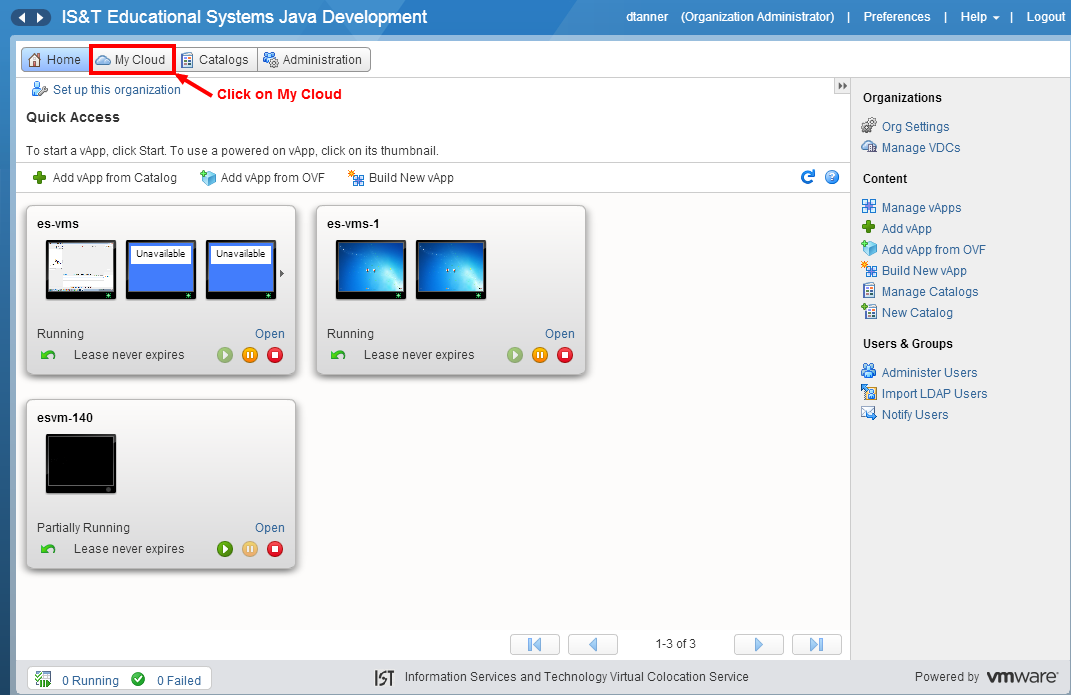
- Click on vApps as shown below:
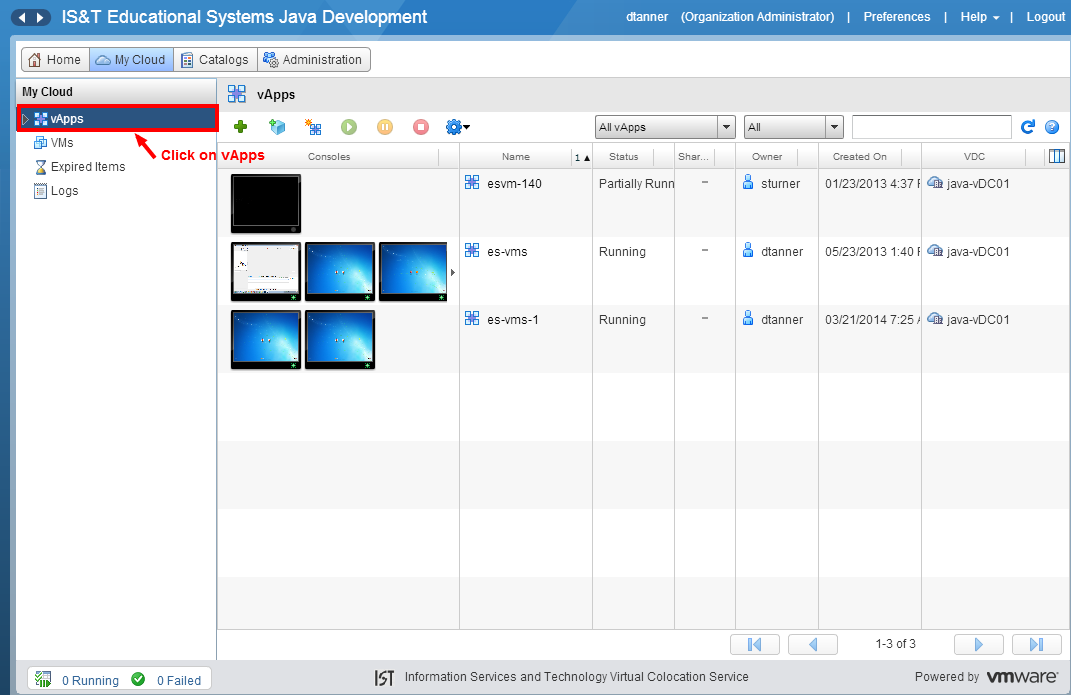
Click on Build New vApp... as shown below:
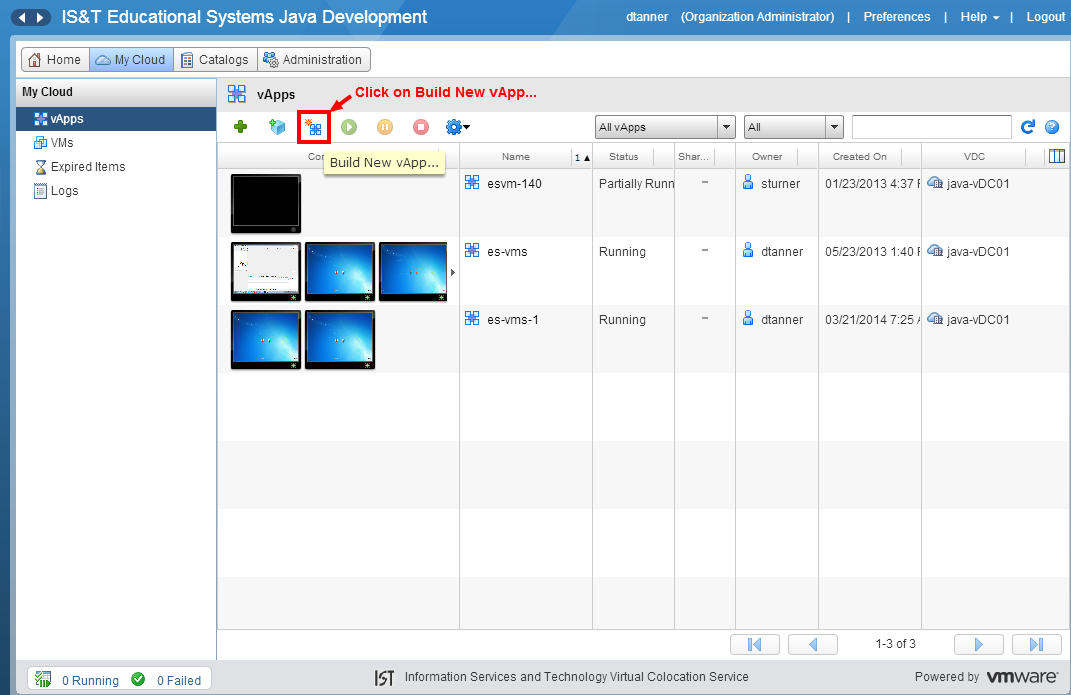 Enter a Name as shown below. The Name should be of the form: esvm-master-yyyymmdd, where yyyy is the year, mm is the month and dd is the day that the master was created. In this example the Name is esvm-master-20140320. The creation date is March 20, 2014. When you are satisfied that everything is correct click on the Finish button to continue.
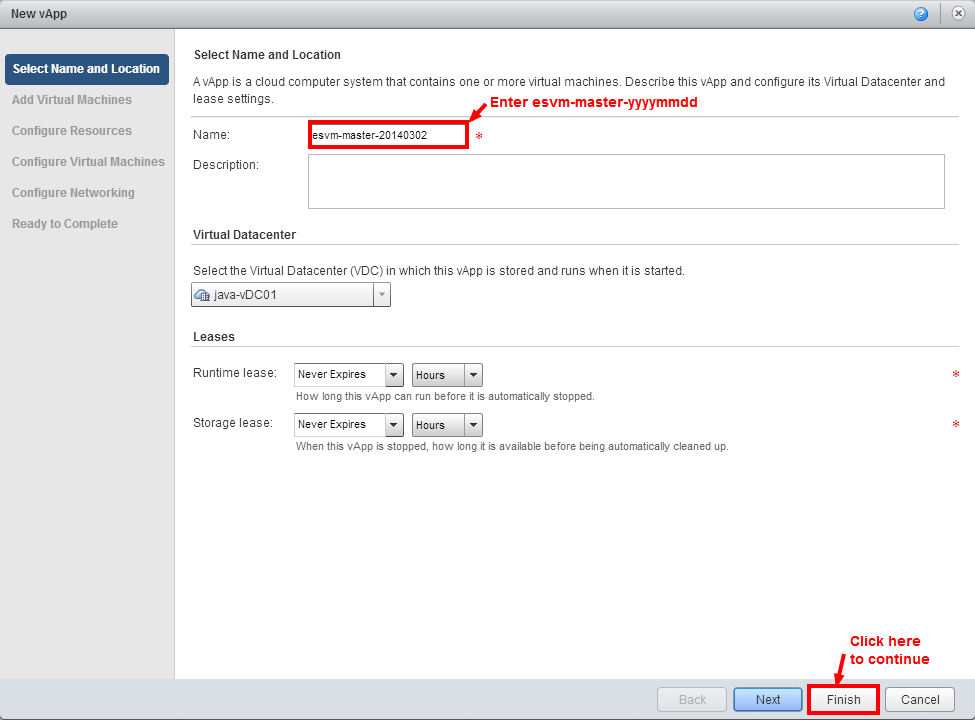 - The following page will be displayed indicating that the esvm-master-20140320 vApp is being created.
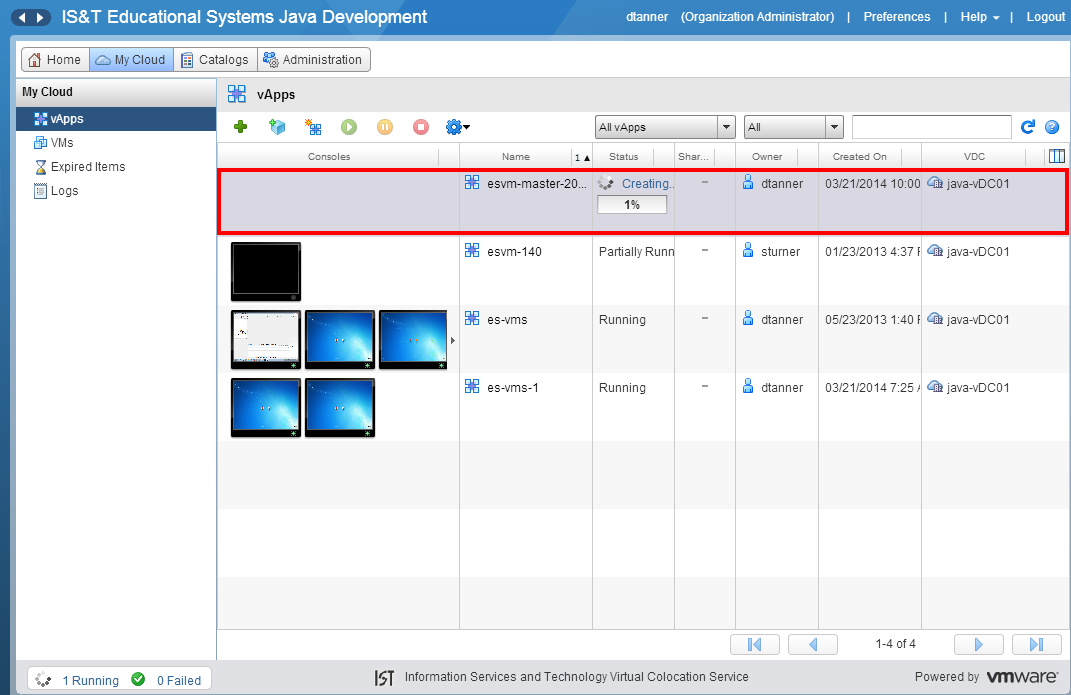
When the vApp has been created, the following will be displayed:
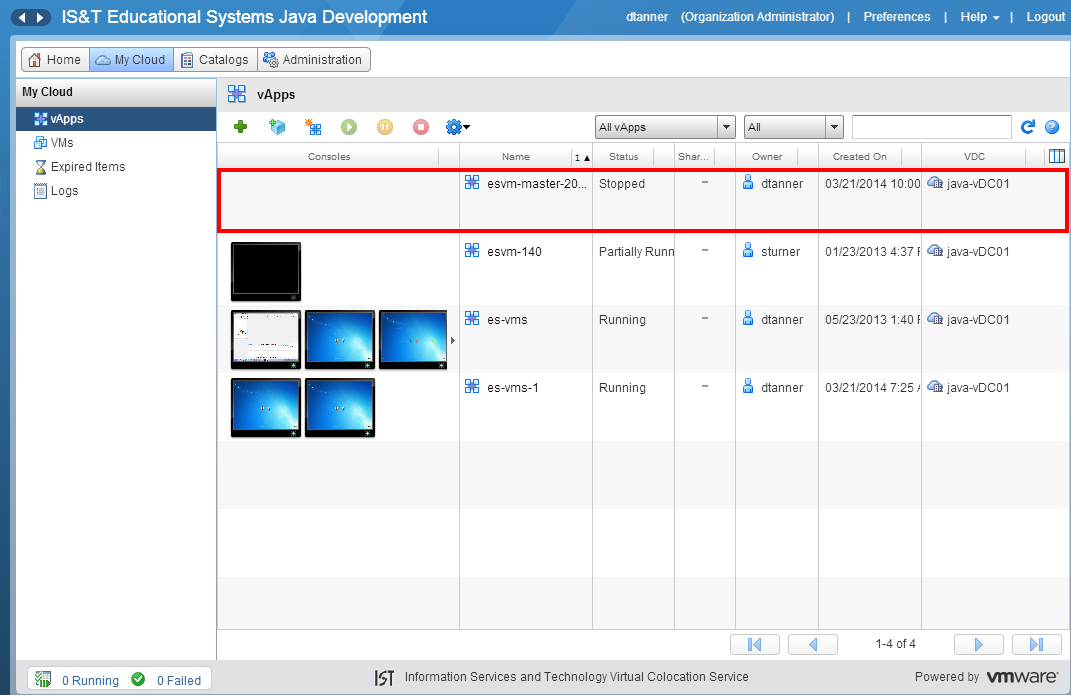
- Now we will create the VM that will be used for the template. Right click on esvm-140 console thumbnail as shown below:
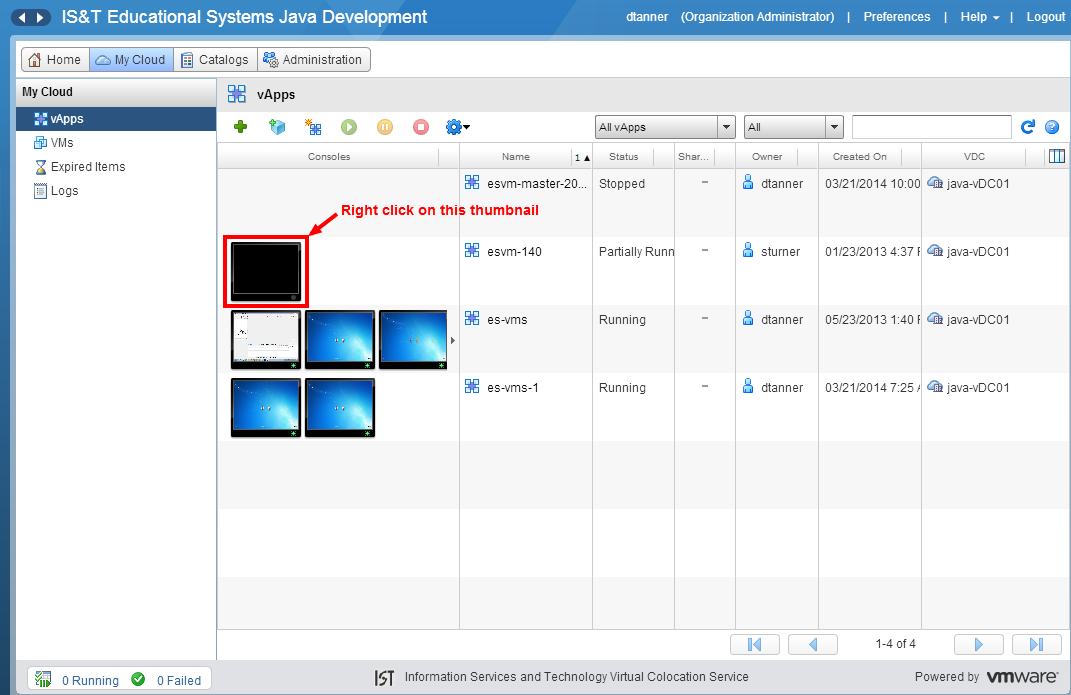
Click on Open as shown below:
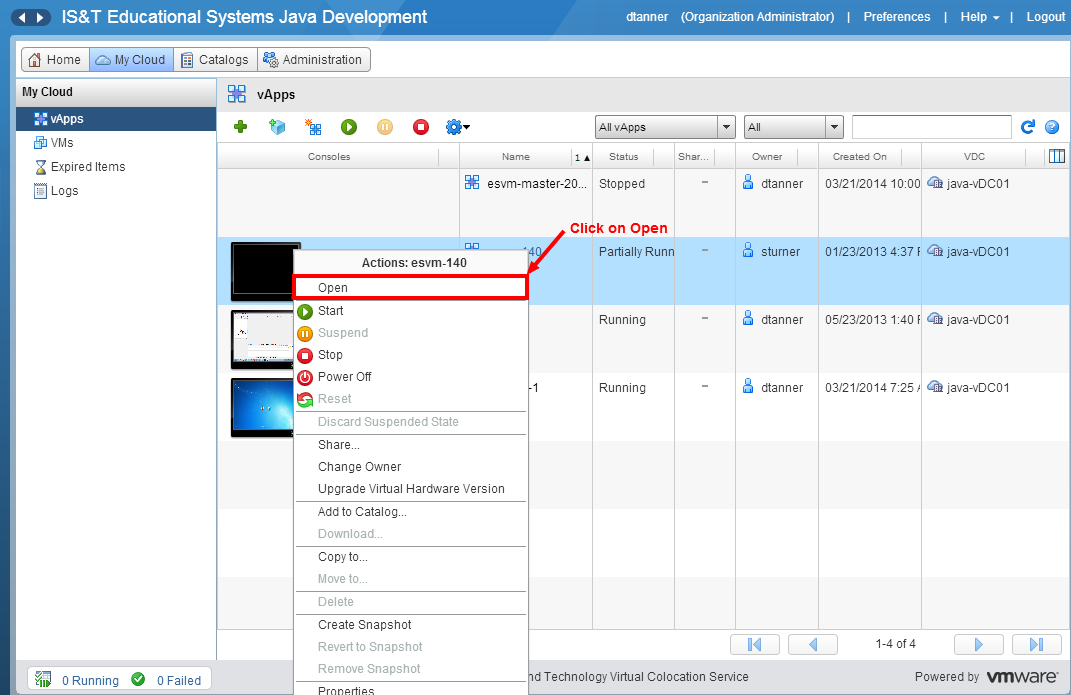 - Right click on esvm-140 console thumbnail and click on Copy to… as shown below:
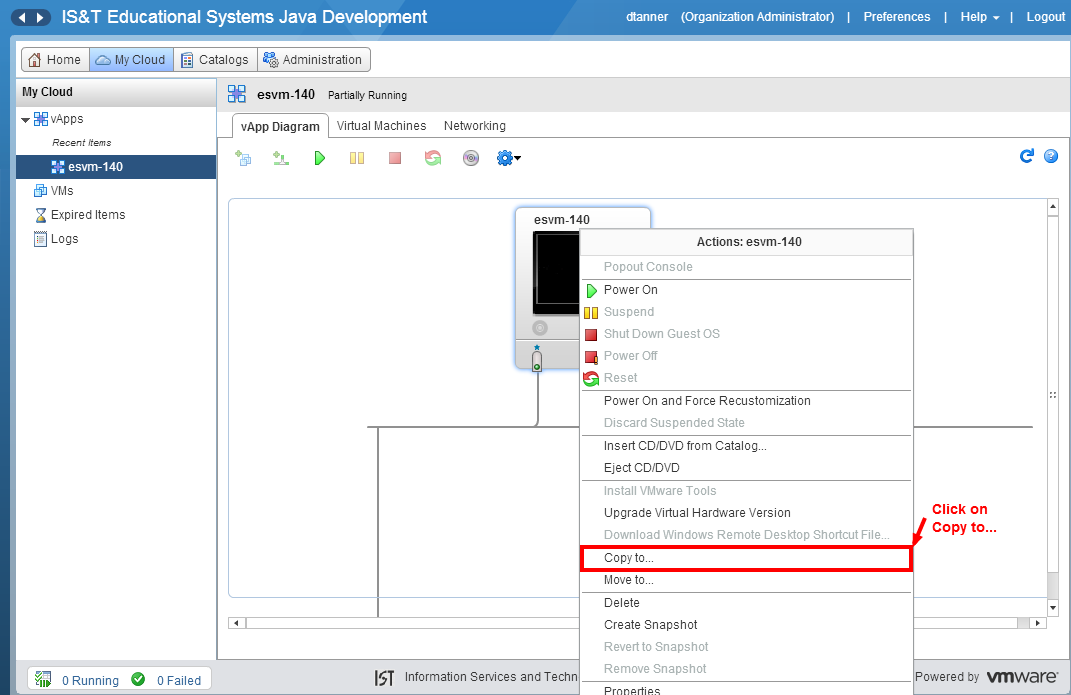
- Select esvm-master-20140320 vApp that you created earlier. When you are satisfied that everything is correct click on the Next button to continue.
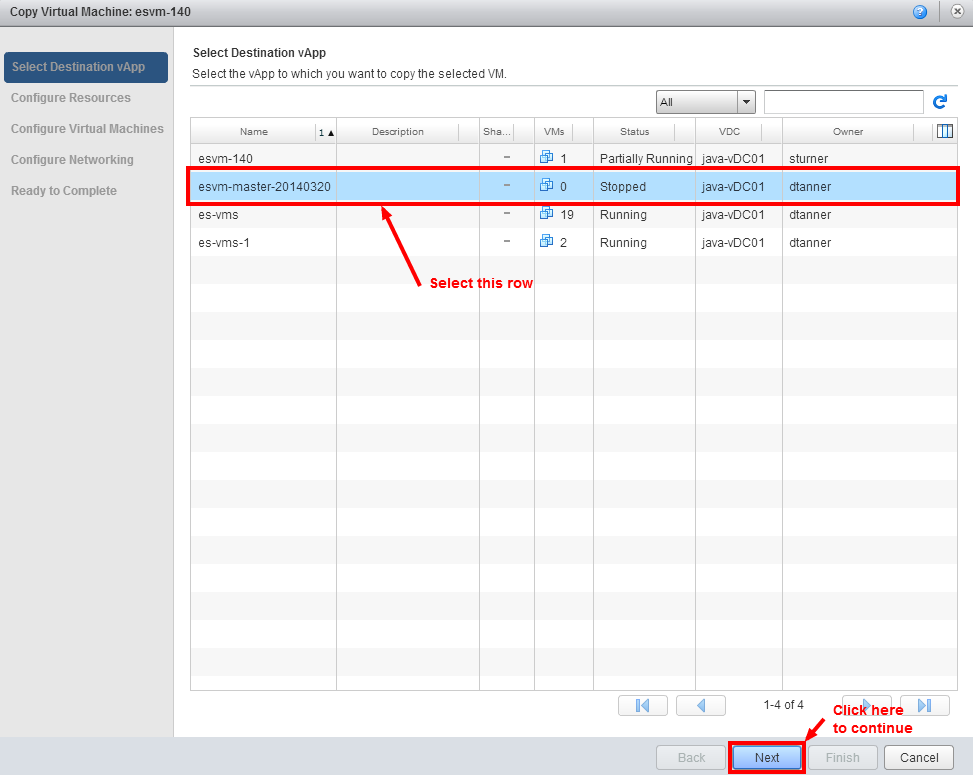
Change the Virtual Machine from esvm-140 to esvm-master-20140320. When you are satisfied that everything is correct click on the Next button to continue.
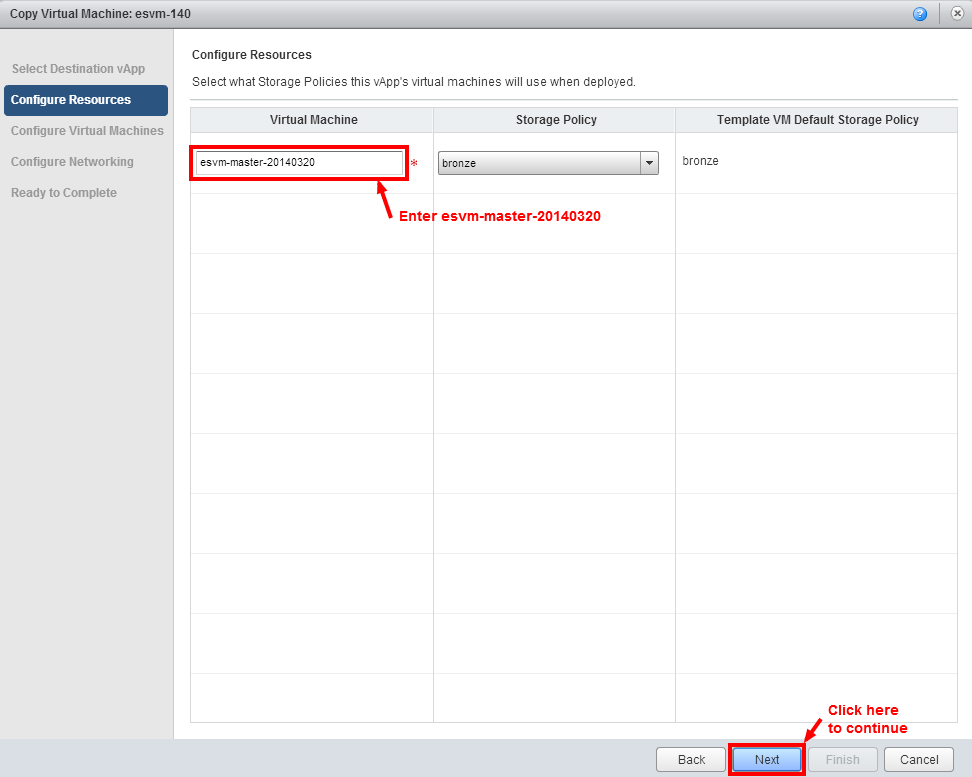 - Change the Computer Name from esvm-140 to esvm-master. When you are satisfied that everything is correct, click on Finish button to continue.
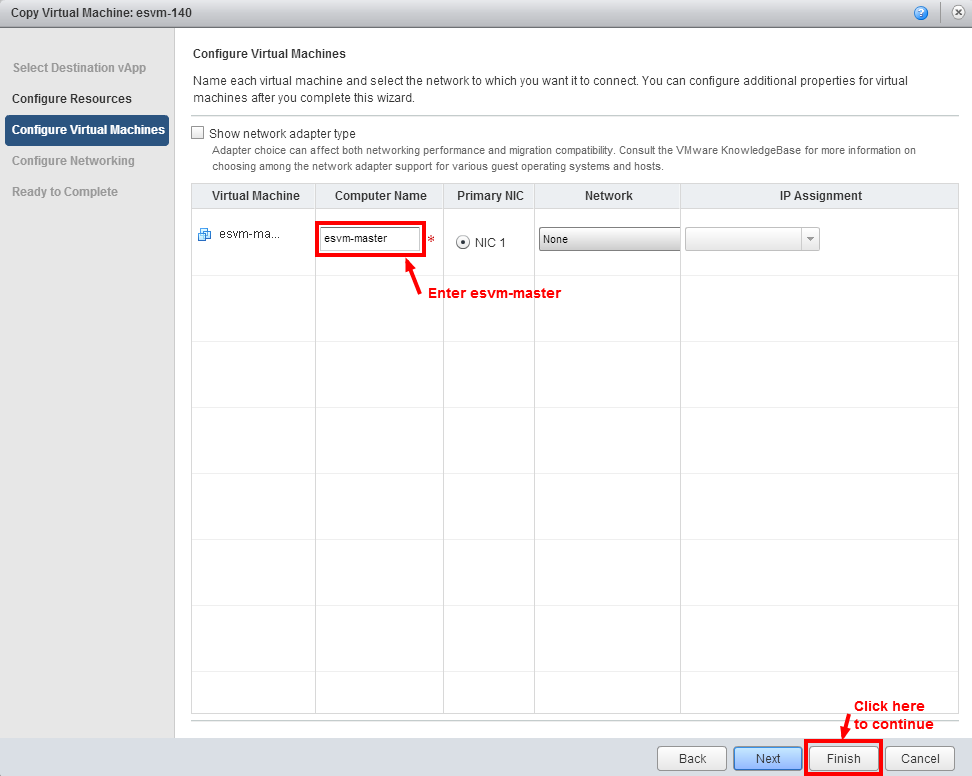
When the following screen is displayed, click on vApps as shown below: 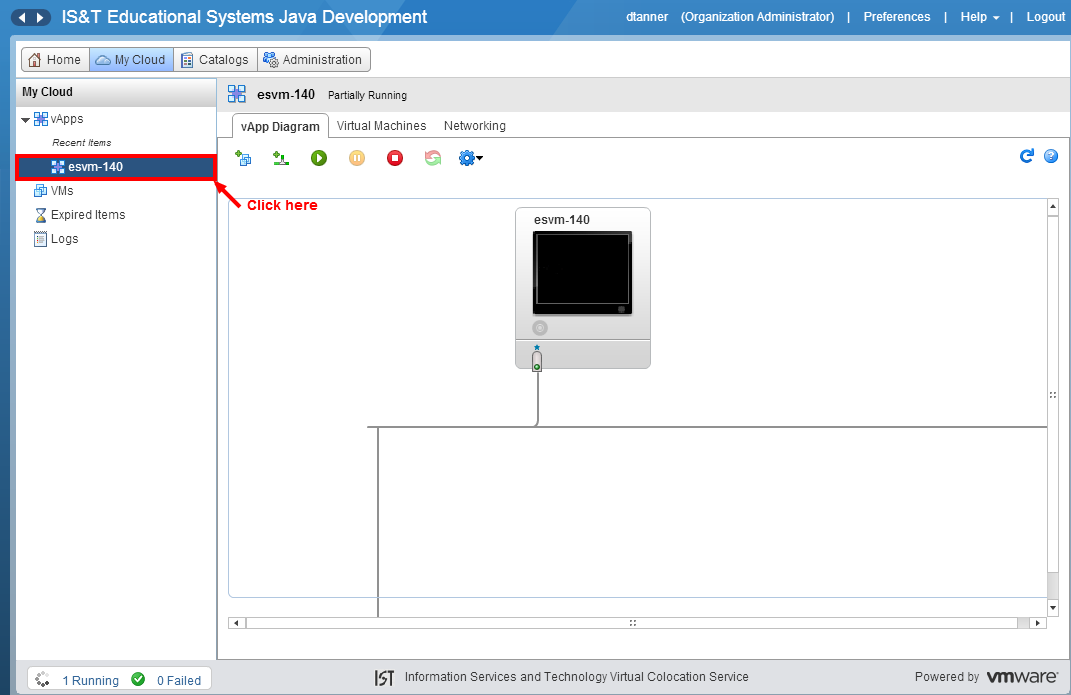
- The esvm-master-02140320 vm is now being created. Please be patient, it take some time to complete.
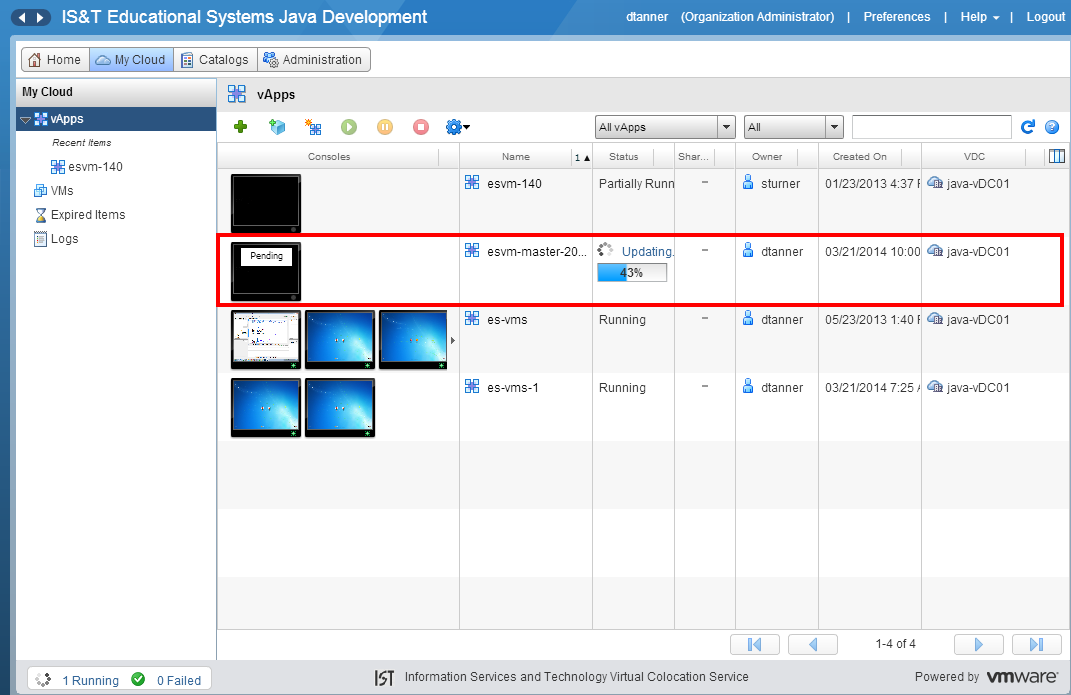
- When the esvm-master-20140320 VM has been built, right click on the esvm-master-20140320 console thumbnail and select Open as shown below:
 Image Added Image Added
Right click on esvm-master-20140320 console thumbnail and click on Properties as shown below:
 Image Added Image Added - Click the Hardware tab and scroll down to the NICs section and click the Delete button as shown below:
|